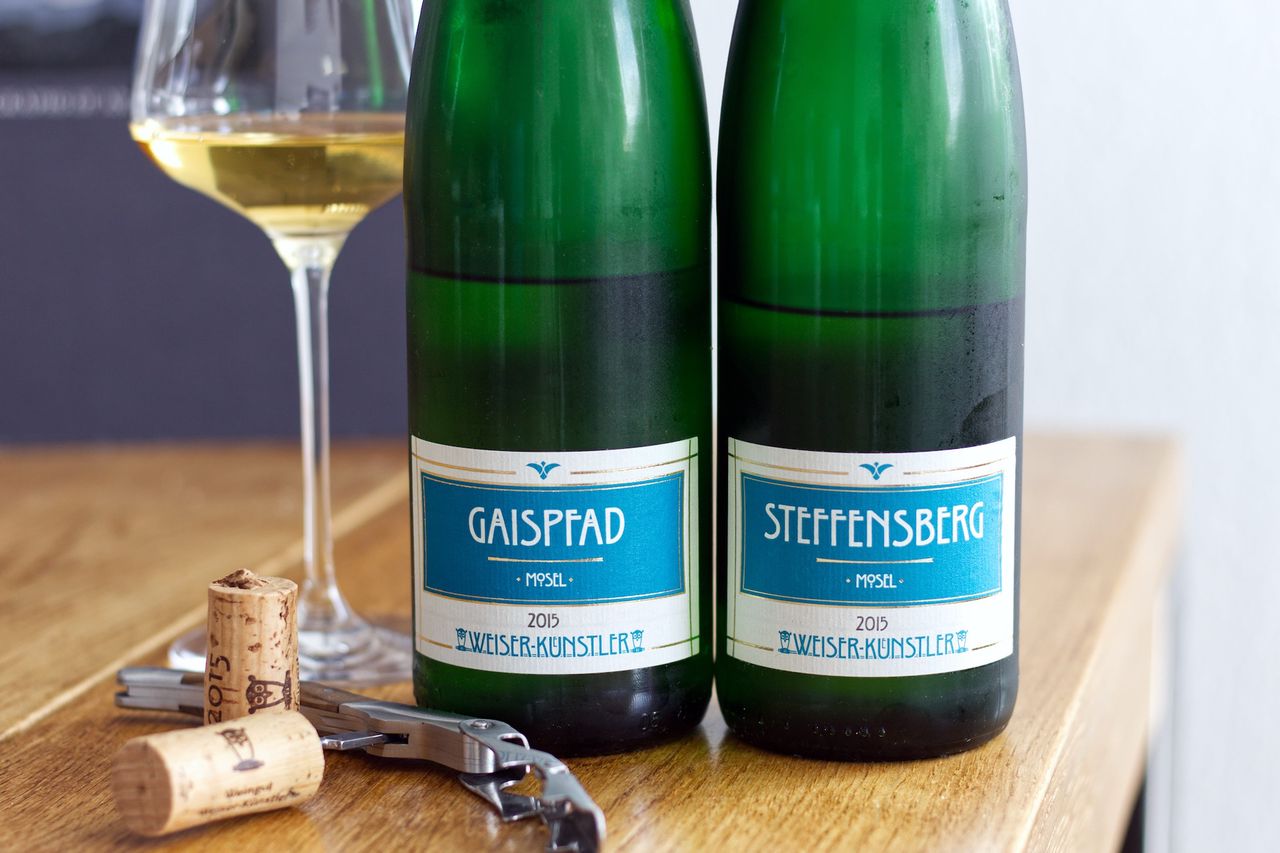Two Bottles Weiser-Künstler
We drink two Rieslings from the Moselle from the Weiser-Künstler winery: a Steffensberg and a Gaispfad, each from 2015

The first real week of summer has struck and while we are simmering in our own sweat, Riesling with moderate alcohol is a good choice. Only since 2005 have Konstantin Weiser and Alexandra Künstler made wine on the Moselle. There are certainly easier areas to grow wine ecologically than the steep slopes of the Moselle valley. Their affinity to the steep slopes goes so far that they are part of the klitzekleiner Ring, a group of vintners who are trying to rescue steep slope vineyards to preserve the cultural landscape of the Moselle. The wines we have in our glass come from the Enkircher Steffensberg and the Trabener Gaispfad. Both bottles are vintage 2015, and with only 11 percent alcohol in Steffensberg and 12 in Gaispfad, it should be pleasant to drink despite the summer temperatures.
We start with the Steffensberg. Slightly ripe on the nose, yellow fruit, very ripe mirabelle plums but rather reserved. The fruity acidity, more of green apples than of lemons, gives it power, nevertheless it’s creamy and rather cool. On the tongue ripe pome fruit and the tannic structure of apple peel, but without an apple skin natural wine note. The wine becomes juicier with every sip. Very elegant. With air comes butterscotch mixed with fresh fruit on the nose. More and more focused, straight and precise in the acidity. The mixture of butterscotch, fresh mirabelle plums and a bit of moselle minerality is so to the point that I put my nose into the glass again and again. It stays that way throughout the evening. The minerality also reaches the palate, the fruit slowly moves from apple towards citrus. The freshness and the light toffee note are really fun.
Overnight the toffee turns into yeast pastry, the acidity becomes crisper, there is much more structure and spice in the wine and also more minerality. There is now a real pull in it.
The Gaispfad begins its life in the glass as a light stinker. But overall even more reserved than the Steffensberg. In the mouth there is also acidity, but it seems much more mature. The whole wine appears more mature and clearly older than the Steffensberg. The acidity on the tongue helps, but it doesn’t really want to get going. With every swivel the wine becomes a bit more mineral, you can smell some iodine, ripe peach and essential oils. A lot of eucalyptus now in the nose. The note does not disappear again in the course of the evening. A little menthol is added, the maturing notes remain. A night in the fridge will not change this.
In direct comparison with the Steffensberg, I think that we were pretty unlucky with the Gaispfad bottle. The wine feels like an old Riesling that has retained its freshness, while the Steffensberg in the glass is a young wine that is just beginning to mature and really turns up the heat. I would never have put both in the same vintage. Probably bad luck with cork variation, but on the outside both corks are completely ok and I don’t see any difference between them. Unfortunately there is no second bottle of Gaispfad in the cellar. The wine is not broken or undrinkable, but in direct comparison it is obvious that this bottle is far below its potential. The Steffensberg as it is now however is a real treat.
Related Posts
- Heymann-Löwenstein - Uhlen Blaufüsser Lay 2020
- Carl Loewen - Maximin Herrenberg 2018
- Two Bottles Riesling by Weiser-Künstler